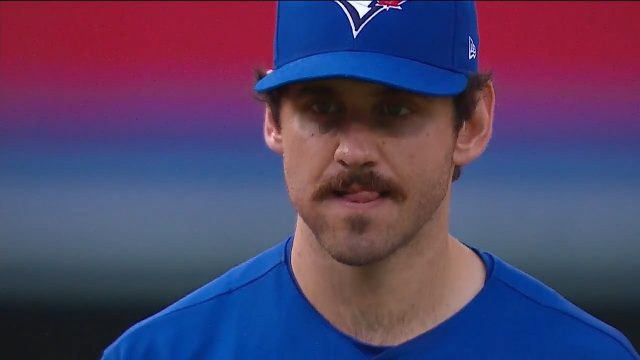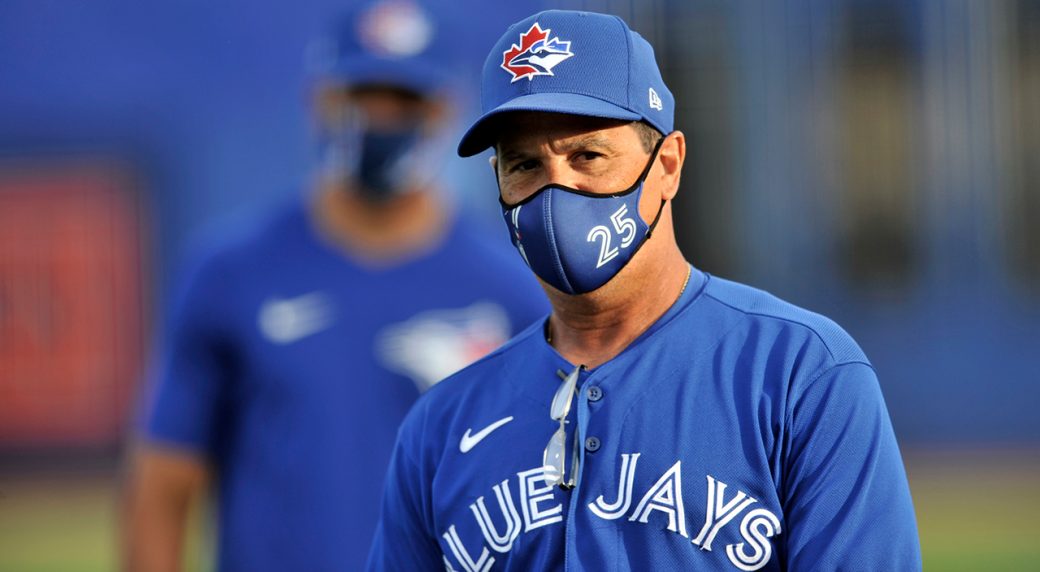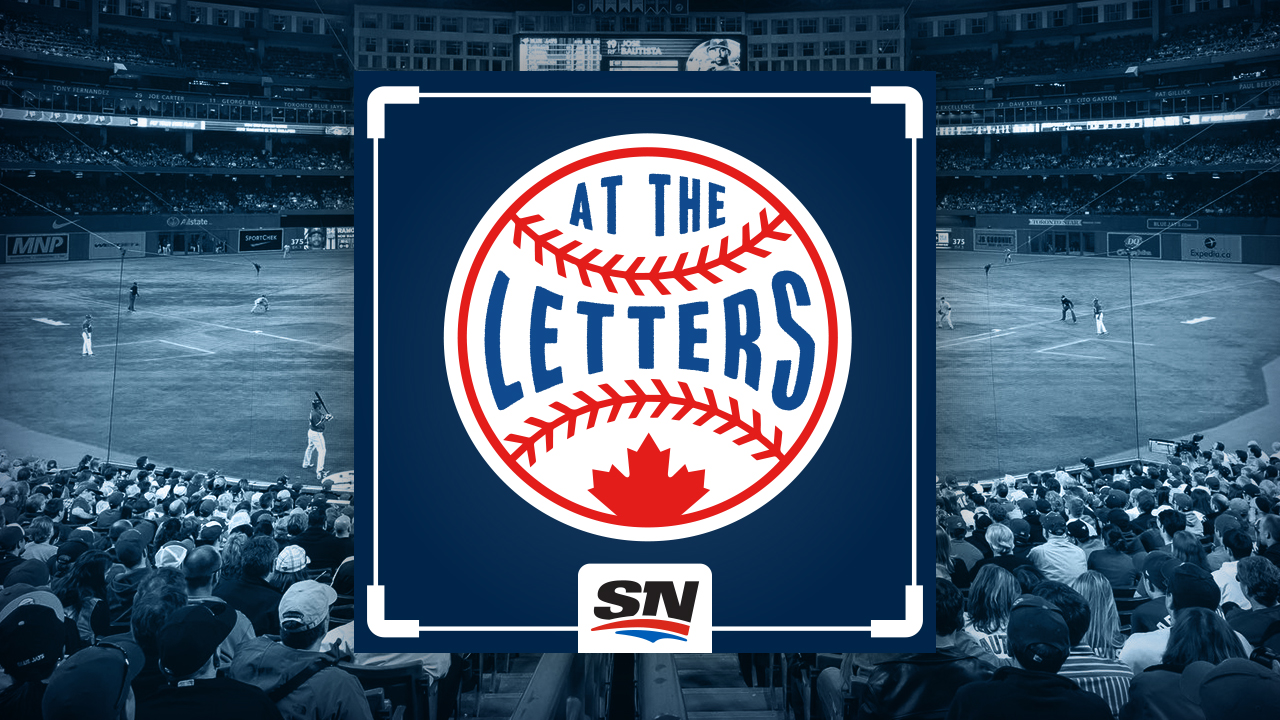To the great dismay of anyone who loves baseball, MLB’s lockout of its players has continued into a fourth month at a time when clubs ought to be into the thick of pre-season schedules and ramping up for opening day. As things currently stand, it’s entirely uncertain when MLB will allow paying customers to consume its product again — an exasperating reality for fans across the league. But particularly for those of the Toronto Blue Jays.
A legitimate 2022 post-season contender with a roster featuring established veteran producers and emergent young stars, the Blue Jays have played 188 of 224 games over the last two seasons — just shy of 84 per cent — away from Toronto thanks to a global pandemic. And even on the rare occasions the team has played in its own ballpark, attendance restrictions have limited the amount of fans who could actually bear witness. The last time Rogers Centre had over 30,000 people in attendance was August 14, 2019 — more than 30 months ago.
No franchise’s fan base has been waiting longer for the opportunity to pack out its building and support its team. And Toronto’s scheduled home opener on April 4 against the reigning AL East champion Tampa Bay Rays almost certainly would have snapped the stretch between Rogers Centre crowds in excess of 30,000 at 963 days. But that game’s been cancelled. And there could be more to come.
So, that’s demoralizing. But there will be professional baseball played in April, as the minor-league season is scheduled to begin whether MLBers remain locked out or not. And waves of Blue Jays minor-leaguers have been reporting to the club’s player development complex in Dunedin, Fla. over the last couple weeks, beginning their ramp-ups towards opening day.
Playing out in the shadow of a bitter, maddening labour dispute at the game’s highest level, it’s been a strange spring training to say the least. But also an important one for the Blue Jays — a developmentally-minded club with plenty riding on the success of its minor-league system in producing future big-leaguers. With that in mind, here are four interesting factors to Toronto’s minor-league camp this month that are keeping club officials busy beneath the surface while everyone waits for MLB’s lockout to end.
Some new toys to play with
On the heels of two off-seasons spent operating at partial capacity thanks to construction delays and a global pandemic, the Blue Jays feel this winter was the first time the club truly maximized its new player development complex in the way it had long envisioned.
And that will only continue throughout minor-league camp as more tools and features come to life. An area of particular excitement for the organization is its hitting lab, which finally got up and running this month.
The lab features a markerless motion capture system collecting and analyzing a trove of biomechanical movement data; high-speed Edgertronic cameras allowing players to slow down footage of their swings at rates of over 1,000 frames per second; Hit Trax technology spitting out a litany of real time metrics such as exit velocity, distance, and launch angle; Diamond Kinetics bat sensors tracking swing speed, acceleration, plane, and path; force plates measuring three-dimensional kinetic data to tell hitters how well they’re generating power and transferring energy from their lower half through their swings.
It's a lot. So much that Blue Jays developers themselves are still working out how best to utilize all the data before them.
“It's something that we're going to learn throughout the year. We learned some things from the pitching lab last year. And hopefully that gives us a little bit of a head start with the hitting lab,” says Joe Sclafani, Toronto’s director of player development. “We have to figure out the best way to tailor it to each one of our players so that they don't get overwhelmed with the amount of information. Some of the guys who come from elite programs will have been exposed to some of this stuff before. But for a lot of guys, it’ll be completely foreign to them.”
To that end, Toronto recently hired Ryan Beckman — a Dunedin native who spent the last decade as head baseball coach at St. Petersburg College — to run the lab full-time, helping players get the most out of the wide array of tools it contains. That process begins over the next several weeks as players are introduced to the lab and put through initial assessments of their swings. And it’ll continue over a span of years as those same players return to the facility to be reassessed and measure how they’ve progressed.
“The challenge is trying to take all these different inputs and come up with reports that are meaningful for us. And then figuring out how to present it to the players and make it significant for them,” Sclafani says. “We’re figuring out how to translate it effectively to make it meaningful for those guys without overwhelming them. Because it's overwhelming even for some of us who do have a bit more exposure to it.”
Big-league coaches with time on their hands
Around 170 Blue Jays minor-leaguers are undergoing a barrage of testing in Dunedin this week as the organization ramps up towards its first full squad workout on Monday. And barring a sudden and unexpected resolution to MLB’s lockout, those minor-leaguers can expect to be exposed to a higher level of instruction than they typically would at this time of year.
Several members of Charlie Montoyo’s major-league staff are in Dunedin with wide-open schedules thanks to the continued delay of MLB activities. And in the absence of big-leaguers to work with, they might as well keep busy and shift their attention to the minor-leaguers they actually have access to.
“We all get that itch — it's that time of year,” Sclafani says. “And that’s what's great about the atmosphere Charlie and [Blue Jays GM] Ross [Atkins] have set on the major-league side — those guys all want to come and help out in any way they can, and see what the minor-leaguers are up to.”
So, while the 22 pitchers on Toronto’s 40-man roster continue throwing progressions on their own at private facilities, Blue Jays pitching coach Pete Walker has been monitoring the bullpens of Toronto’s next wave of pitching prospects as they build up for affiliate seasons.
With young, 40-man catchers Alejandro Kirk and Gabriel Moreno unable to attend club workouts, John Schneider is free to work with lower-level prospects Phillip Clarke and Chris Bec on their form behind the dish. And in the absence of developing infielders such as Kevin Smith and Otto Lopez, Luis Rivera has been putting top prospects Jordan Groshans and Orelvis Martinez through fielding drills.
“Which is pretty special for our guys. It’s not often in a typical spring training that the major-league staff would be around and accessible for our guys to get to talk to them and learn from them,” Sclafani says. “And there's benefits for our development staff, as well. Just seeing how those guys work, how they go about their day, how they prepare. There's definitely a lot of positives there.”

Filling out a triple-A roster
A difficult question Sclafani and Toronto’s front office may need to answer over the next several weeks is how to fill out a triple-A roster in the event 40-man players remain locked out through early April. Even if the labour stoppage was resolved in mid-to-late March, it would be unreasonable to ask those players to get up to speed in time for the Buffalo Bisons opener only a couple weeks later.
That could lead to a run of minor-league signings in the coming weeks — particularly on the pitching side — as Toronto’s front office searches for former big-leaguers who want the opportunity to prove they can still hang with top competition or minor-league veterans who simply want to play baseball and earn paycheques.
It might also create opportunity at MiLB’s highest level for players who otherwise would’ve reported to another affiliate. Without a labour stoppage, the Blue Jays likely would’ve begun the season with Moreno handling a starter’s workload behind the plate at triple-A. But if he’s still locked out, that could create a roster opening in Buffalo for Bec or Clarke, who were likely headed for double-A.
This scenario would also have a knock-on effect throughout the organization as high-A players back-fill for double-A players and so on and so forth. One way or another, the Blue Jays will have to get creative and ensure their minor-leaguers are prepared for unique, unexpected challenges.
“That’s something that we’ve been talking about a lot,” Sclafani says. “It’s just so hard to say what will happen with all the uncertainty. Hopefully it gets figured out with plenty of time to spare and it's not a factor. But as things get closer, we'll have to work through that a bit more.”
Finalizing minor-league housing
Another new wrinkle the Blue Jays are working through this spring is finalizing housing arrangements for most of its minor-league players, a requirement clubs must fulfill beginning this season.
Under the new MLB policy, clubs must provide furnished accommodations at a “reasonable, commutable distance from the ballpark” with a kitchen, bathroom, shared living space, and bedrooms containing a single bed per player. No more than two players can share a single bedroom, and clubs are on the hook for all basic utilities including electricity, water, and internet.
“That’s a huge deal for anyone in the minors — that’ll help a lot,” says Kellin Deglan, a veteran minor-leaguer catcher who spent the entirety of his 2021 season living out of various hotel rooms. “Housing costs take a ton out of your paycheque. If you’re moving around a lot, it can really add up. And it can be so hard to find short-term, month-to-month leases in a lot of minor-league cities. Most of them are 12-months minimum; maybe you’ll find six months if you’re lucky.”
That’s why many minor-leaguers end up living out of hotels or crashing on couches with teammates. Players get called up and sent down. They get sent to development complexes to rehabilitate injuries. They get traded in the middle of their seasons. With so little predictability as to where they’ll be living on a month-to-month — sometimes even week-to-week — basis, it makes little sense for a minor-leaguer to lock into a lease on an apartment in a town they may not be in for long.
Consider Deglan’s 2021. He started his year on the New York Yankees’ taxi squad in April, played in Scranton for the club’s triple-A affiliate in May, went off to Florida with Team Canada for Olympic qualifiers in June, returned to Scranton later that month, ended up back on New York’s taxi squad for all of July, was traded to the Blue Jays in August, and spent the remainder of his season in Buffalo.
The longest stretch the 29-year-old spent in one place was two weeks. Transporting his life with him in suitcases, Deglan — the father of a one-year-old with his wife, Ashley, by the way — was constantly navigating the logistical challenge of figuring out where he’d sleep during homestands while trying to perform his best on the field.
“Honestly, it'd just be nice if we had a place where we could unpack our truck and our suitcases,” Deglan says. “Instead of a hotel where you’re in and out every week or two, loading up the truck before a road trip and unloading it back at the hotel every homestand.”
Charlie Wilson, the Blue Jays’ director of minor league operations, has overseen Toronto’s implementation of the policy, which will look a little different at each affiliate. The Blue Jays are currently planning to utilize furnished apartments at some levels and hotel rooms at others. In the past, the club has boarded players with host families at lower levels of the minors. Sclafani says that option has been explored again for 2022, but it’s unlikely the club will continue to utilize it.
“We've been working through it for months now and trying to figure out how to put our players in the best spots possible. And we feel like things are in a pretty good place generally,” Sclafani says. “There's still some things that are up in the air. But we feel like they're trending in the right direction and we should have clarity on it pretty soon. We're trying to exhaust every avenue and just see what's going to be best for the guys.”


